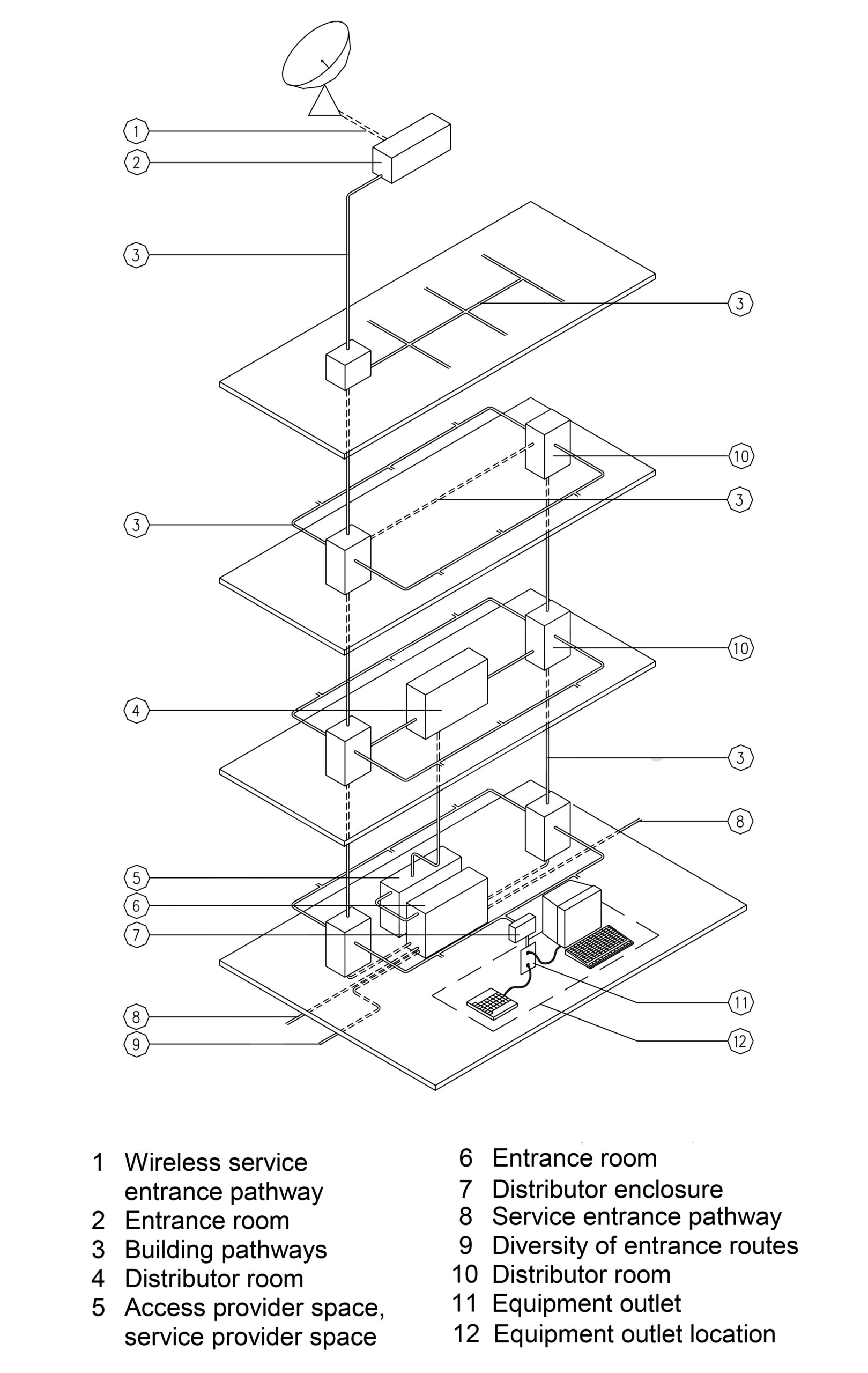ANSI/TIA-569-E: Telecommunications Pathways and Spaces
ANSI/TIA-569-E “Telecommunications Pathways and Spaces” was developed by the TIA TR‑42.3 Telecommunications Administration, Pathways, Spaces, Bonding and Grounding Subcommittee and published in May, 2019.
Scope: This Standard specifies requirements for telecommunications pathways and spaces in commercial and multi‑tenant buildings, access provider spaces, and service provider spaces where entrance rooms, distributor rooms, enclosures, racks and cabinets and other telecommunications facilities and infrastructure is located. Pathway locations include areas above the ceiling, access and cellular floor systems, cable support systems, underfloor duct and insert systems, perimeter pathways and surface mount pathways, and utility columns. Included are separation and isolation considerations for operating environment compatibility, telecommunications facility diversification recommendations to ensure operation in catastrophic conditions, temperature and humidity requirements, and thermal characteristics of pathways. Architectural (e.g., room size and firestopping) and environmental (e.g., HVAC, grounding and bonding, and electromagnetic noise reduction) design guidance is also provided
Significant changes from the previous edition include:
- Revised temperature and humidity requirements from TIA‑569‑D‑1 incorporated
- Pathway and space considerations for support remote powering over balanced twisted‑pair cabling from TIA‑569‑D‑2 added
ANSI/TIA-569-E Content:
- Environmental Compatibility
- Diversity of Telecommunications Facilities
- Building Spaces
- Access Provider Spaces and Service Provider Spaces
- Multi-Tenant Building Spaces
- Building Pathways
- Annexes addressing Firestopping, Electromagnetic Noise Reduction Guidelines for Balanced Twisted-Pair Cabling, and Considerations for Supporting Remote Powering over Twisted‑Pair Cabling
ANSI/TIA-569-E-1 Content:
- Modifications to ANSI/TIA-569-E
ANSI/TIA-569-E Example of Pathways and Spaces in a Single-Tenant Building:

Back to the FOTC TIA Standards Explorer
